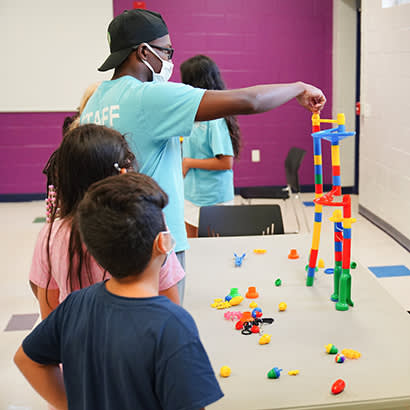
For an enhanced digital experience, read this story in the ezine.
Approximately one in five youth and adults worldwide experience mental health conditions and substance use disorders. In 2020, the number of people seeking help with anxiety and depression skyrocketed. Thoughts of suicide and self-harm are being reported at higher rates than ever, with suicide being the second leading cause of death among 15- to 29-year-olds. Approximately 20 percent of those who’ve experienced post-conflict events, such as natural disasters, extreme violence, pandemics and war, have a mental health condition.
Over time, stress, trauma and Adverse Childhood Experiences (ACEs) may contribute to serious health problems — such as heart disease, high blood pressure, diabetes, substance abuse and mental disorders, including depression or anxiety. Mental health conditions can create loneliness and isolation and have a substantial effect on relationships, school or work performance, health outcomes, and the ability to participate in the community.
Building Resilience
Fortunately, research has shown that building resilience in individuals, families, communities and society can counteract some of the negative consequences of stress, trauma and ACEs. According to the Centers for Disease Control and Prevention, building resilience requires safe, stable and nurturing relationships and environments (SSNREs). SSNREs should be fostered at home, school, work and in the community.
Public parks serve an important societal function, with well-documented physical and mental health benefits that build resilience. Spending time in nature is linked to improvements in mood and emotional well-being. Recreation has been shown to improve fitness, help develop cooperation and teamwork, and is a great way to have fun while developing safe, stable and nurturing relationships with others. During the pandemic, parks across the country saw an increase in park visitation (up 63.4 percent). As park and recreation professionals, we are charged with the creation of SSNREs using the resources, tools and principles below.
The Community Resilience Initiative is an excellent resource for recreation professionals that offers training, community engagement materials, conferences and multiple products for embedding resilience building blocks into your programs to combat ACEs, trauma and toxic stress.
The Kaleidoscope Project has an excellent tool for learning best practices for places and spaces, building positive relationships, using nature to nurture, creating diverse spaces and activities, fostering safety and support, enhancing accessibility and inclusion, social emotional well-being, and building resilience.
Six Key Principles
Substance Abuse and Mental Health Services Administration (SAMSHA) recommends that individuals, families and communities integrate information about resilience-building strategies into their organizational policies, procedures and practices to foster a culture of service that promotes safety, empowerment, healing and self-care. There are six key principles in its resilience-building approach.
- Safety – The physical environment is safe, and interpersonal interactions promote a sense of safety.
- Trustworthiness and Transparency – Organizational operations and decisions are conducted transparently with the goal of building and maintaining trust for all involved in the organization.
- Peer Support – Peer support and partnerships are avenues for establishing safety and hope, building trust, enhancing collaboration, and promoting resilience and healing.
- Collaboration and Mutuality – Power is leveled or shared to help with meaningful decision making and importance is placed on partnering and working together.
- Empowerment, Voice and Choice – People are empowered to share in decision making, choices and goal setting to determine the plan of action. Individuals’ strengths and experiences are recognized and built upon.
- Cultural, Historical and Gender Responsive – The organization actively moves past stereotypes and biases; offers access to diverse groups; leverages traditional cultural connections; and incorporates policies, protocols and processes that recognize and address social equity and historical trauma.
Organizations that embrace these principles have reported positive results in helping their communities heal and overcome the consequences of stress and traumatic experiences. By using resilience resources, tools and SAMSHA’s six principles, park and recreation professionals can provide a network of support and contribute to public health efforts to build stronger, healthier and more resilient communities. Here are a few questions to get you started:
- Does your community provide a sense of belonging for all your residents? Who is not represented?
- When was the last time you asked your community what mattered to them?
- What can you do within the next six months to further build resilience in your community?
- Do you have access to the tools, equipment or resources you will need to succeed? Are there any materials you will need to gather?
- Are there partnerships or collaborative opportunities to leverage or create to build community resilience? Who can help you, or who can you help within you community?
- How does resilience tie into your organization’s vision, mission and values?
Jessica Livingston, M.Ed., CPTD, is a Training Analyst for City of Raleigh Parks, Recreation and Cultural Resources. Ainsley Worrell, M.S., CHES, is a Health and Wellness Program Director for City of Raleigh Parks, Recreation and Cultural Resources.

